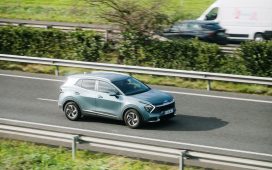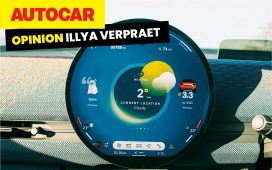This is the industry’s first AEB feature to apply end-to-end technology, which reduces the risk of collisions by learning from the human driving experience, Nio said.

Nio (NYSE: NIO) began rolling out the Banyan 2.6.5 CN system for vehicles based on the NT 2.0 technology platform on July 11, bringing with it AEB (automatic emergency braking) functionality optimized using artificial intelligence (AI).
The upgraded AEB feature enhances the vehicle’s ability to avoid vehicles, cyclists and pedestrians crossing diagonally in front of it, according to an update log posted on the Nio App.
This is the industry’s first AEB feature to apply end-to-end technology, which enhances the system’s ability to determine the location, direction of travel and speed of the target in front of it by learning from the human driving experience to further reduce the risk of collision, according to the changelog.
Compared to traditional AEB, the enhanced AEB based on end-to-end technology can handle more dangerous scenarios with more precise braking timing, said Zhang Weifeng, Nio’s smart driving product manager, according to a video the company posted on Weibo today.
Unlike traditional rule-based software systems, software built using end-to-end technology hopes to leverage AI to bring coverage to scenarios otherwise not covered by rules.
In the smart driving space, Tesla (NASDAQ: TSLA) released FSD V12 earlier this year, which brought good results. This has gradually made the end-to-end technology used by it an industry consensus, and more car companies in China are beginning to try this route.
On June 19, local media outlet LatePost reported that Nio has reorganized its smart driving team to focus more on end-to-end technology.
The planning and control part of the smart driving solution currently used by Nio is still rules-based for now, and it previously said it would roll out active safety features based on end-to-end technology, including AEB, in the first half of the year, the report noted.
Executives from a number of local EV makers have made frequent references to the end-to-end technology over the past few months, while Nio’s local peer Xpeng (NYSE: XPEV) said in May that it realized the use of the technology.
Sharing his thoughts on robotaxi on Weibo yesterday, He Xiaopeng, chairman and CEO of Xpeng, called on players in the space to up their bets on end-to-end technology.
“The current technology path of many L4 companies is still a combination of algorithms plus small AI models, and they are painfully hesitant to make the move to end-to-end,” Mr. He wrote on Weibo yesterday.
“My personal advice is: don’t hesitate to change, the one behind is the big guy,” Mr. He said, suggesting that end-to-end technology is the future.
Back to Nio, it also improved its NOP+ (Navigate on Pilot Plus) capabilities in the Banyan 2.6.5 CN system update, boosting the ability to navigate in full scenarios, according to its changelog.
Nio vehicles have also received enhancements to their visual fusion parking assistance capabilities, according to the company.
Banyan is the system used in Nio’s NT 2.0 platform-based models; its older NT 1.0 platform-based models use a system called Aspen.
Nio sees total user mileage under NOP, NOP+ cross 1 billion km
Become A CnEVPost Member
Become a member of CnEVPost for an ad-free reading experience and support us in producing more quality content.











